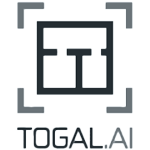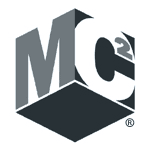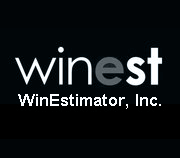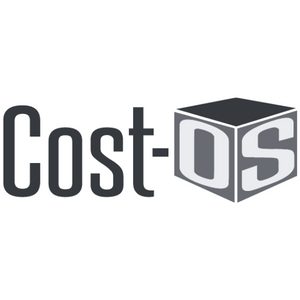
Construction Estimating Database
Yes, you wear a lot of hats. But what is at the heart of what you do as a construction estimator?
It’s getting the numbers right.
Learn More
If you are a seasoned estimator, you keep a lot of those numbers in your head. Your years of experience is your database. But because of the rapidly changing landscape of preconstruction, that database needs to be easily accessible to the entire team. Collaboration, efficiency, accuracy, and speed are the names of the new game.
Owners want defendable numbers and until they come up with a way to read minds, you need a way to show owners that your numbers are legit. General Contractors believe that one of the top five biggest problems facing construction in recent years is the accuracy of cost estimates.
That’s why precon teams are turning to digital databases — one single-source of truth that captures and stores all your estimating data.
What is a Cost Database in Construction?
A cost database is a centralized repository of all your construction costs, direct and indirect, that go into a construction estimate. The most efficient way precon teams can utilize a historical cost database is by implementing software designed to capture, store, and recall your data for the entire lifecycle of the project.
The reasons why precon teams are turning to digital construction estimating databases is to create more accurate conceptual estimates quicker, increase collaboration with internal and external stakeholders, make more informed project decisions, and decrease risk.
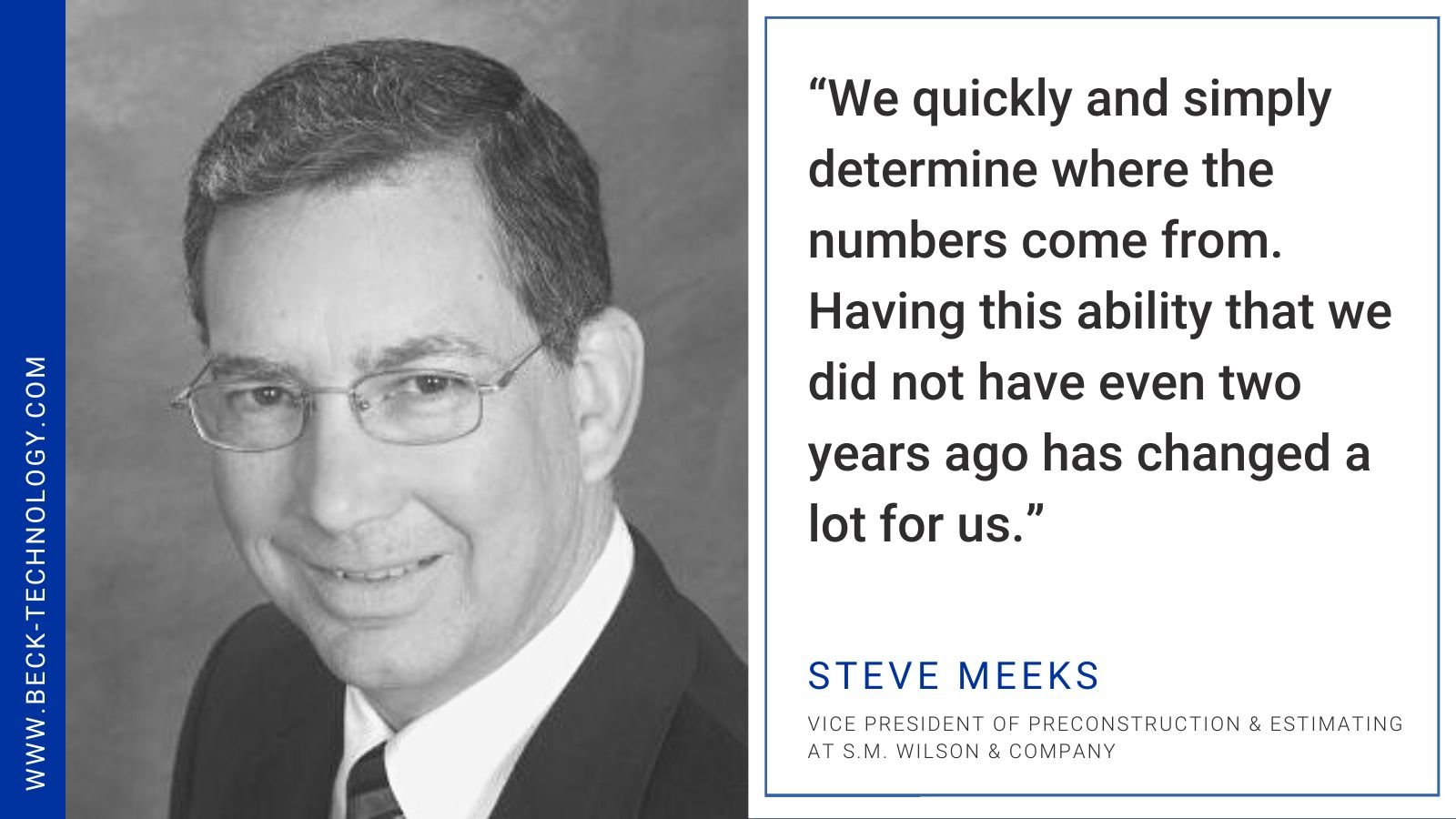
Picture how much easier your life would be if:
- Everyone could access the same data almost instantly.
- You didn’t have to waste time copy and pasting info back and forth between programs.
- There were no extra steps or clicks to save data.
- There was no more worrying about if there is missing data.
- Stop scrambling at the 11th hour.
- You could present a defendable deliverable.
Overall, construction estimating databases are helping general contractors deliver projects on time and on budget—something that wins repeat work. And it all starts with preconstruction.
How Does a Construction Estimating Database Work?
Though compiled, mass-produced databases like RSMeans and Costbook are convenient, they aren’t exact and can be outdated — especially when material and labor costs fluctuate. Creating your own construction estimating database using your specific information produces better numbers and more accurate conceptual estimates.
Specifically designed for preconstruction teams, DESTINI Estimator construction estimating software updates the capture of your costs in real time, so your estimate numbers are always on point.
No longer are estimators and preconstruction teams having to go on a hunch, automation and artificial intelligence are making it possible for precon teams to make project decisions based on irrefutable evidence because of these cost history databases.
In the case of DESTINI Estimator, the database behind the estimating software is called DESTINI Data Manager. This is where all your construction costs are stored and relayed back into Estimator. Using a feature called templates, you can build projects based on historical cost and never have to start an estimate from scratch ever again.
Your templates will have all the necessary assemblies and line items built in. When you start a new estimate, simply begin from your similar building template. This saves a significant amount of time allowing estimators to value engineer a project and add more value to the project and to the owner.
For Taimoor Khan, Vice President of preconstruction at Satterfield & Pontikes Construction, he and his team have been able to cut their estimating time in half which means they can add more estimates to the roster, increasing their chances of winning more work. Taimoor says, “overall you are doubling the volume you can estimate in a year.”
Also, if you have clients that build many of the same type of buildings, say fitness centers, hospitals, or schools, your cost database can be used to inform your clients of cost predictions. This is extremely powerful for Balfour Beatty. Landon McQuestion, Vice President of Preconstruction at Balfour Beatty, says, “They’re [clients] always very interested in how much they should put out for this bond. They’ll ask how much is a two-story classroom building going for right now or how much is a stadium in two years…how much should I plan on spending in two years for that? Using the historical cost data, we can inform them a lot better and a lot faster."
You can use this cost database to compare similar projects sorted by building types, region, owners, and any other aspect of a project you want to analyze. These transparent databases give estimators the ability to see where things went wrong and what went right so better project decisions can be made.
Real Life Use Cases for a Construction Estimating Database
With over 230 companies and 3,000 users of DESTINI Estimator, there are five primary benefits of implementing a centralized construction estimating database:
- Added value to owners
- Training junior estimators
- Defendable deliverables
- Benchmarking
- Adding Value to Owners
Building trust and maintaining a good relationship with clients is nearly as important as delivering a project on time and on budget. Once you hand off a project to operations, meeting project deadlines is beyond precon’s control, but your client’s experience begins with you—the preconstruction department.
What you do in precon can set the tone for the entire life of the project. Don’t discredit the enormous impact you have on a project’s outcome. Tamara Altom, a project estimator at Benchmark Construction says, “…you really are in charge of the client’s experience from beginning to end.”
Having the cost history right at your fingertips allows you to show an owner what has worked in the past, where you have been able to save the project owner money and mitigate risk. All leading to what they want—the project delivered on time and on budget, while still completing their vision of the final building.
Bringing owners in during the precon phase of the project and maintaining a regular cadence of collaboration and communication helps build trust. Mike Hurley, vice president at Clark Construction Group, one of the country’s largest contractors, says, “Being able to access and leverage our preconstruction cost data in DESTINI Estimator allows us to quickly and easily provide feedback and solutions to our clients.”

Training Junior Estimators
Many preconstruction teams have no standard procedures to formally train new estimators. To expect new hires to go running with boots on the ground the first day is one thing, but to expect them to get it all is another.
Training takes time and resources but with a standardized cost database, these junior estimators can jump in quicker and easier with confidence. Further, as we start seeing younger generations enter the AEC (Architecture, Engineering and Construction) industry, we need to meet them where they’re at—especially for recruiting and retention.
Gen Z and Millennials, and younger are the newest groups to enter the construction space and these groups are digitally dependent, innovative, and communicative. Outdated and inefficient processes, unwillingness to try new things, and working in silos won’t do it for them.
 New data-driven construction technology allows these new preconstruction professionals the ability to use their skills they spent so much time on developing—in school or in the field. Johnny Maghzal, head of development at Togal.AI takeoff software, says, “People fresh out of four years of school don’t want to spend their time clicking and dragging, they want to use their brain, they want to communicate with trade partners, and they want to learn from their seniors how things are built, not really coloring and tracing.”
New data-driven construction technology allows these new preconstruction professionals the ability to use their skills they spent so much time on developing—in school or in the field. Johnny Maghzal, head of development at Togal.AI takeoff software, says, “People fresh out of four years of school don’t want to spend their time clicking and dragging, they want to use their brain, they want to communicate with trade partners, and they want to learn from their seniors how things are built, not really coloring and tracing.”
For Balfour Beatty, before switching to DESTINI Estimator, they were using a shocking amount of different software to put estimates together—7 different takeoff tools alone, not to mention how many they were using to complete the estimate. Landon describes it as “…very difficult and time consuming to go through all the of the different information and understand what we had, put it together, and use it in an efficient way.” On top of that their junior estimators had to learn how to put together estimates in 6 or 7 different ways because every senior estimator had their own way of doing things. This was extremely inefficient. And no doubt frustrating for those junior estimators.
For Balfour Beatty, utilizing their construction cost history database has made their estimates “cleaner” and training is easier and quicker. Landon says, “The biggest advantages are the use of training. We hired quite a few new people over the past year and training them, even remotely training them, was really easy because all of the operations were there, how it was supposed to be done was there…so they’re learning a lot faster.”
Defendable Deliverables
This one goes back to the customer experience. Your job in precon is not to just create the story for the owner, but to tell that story. Communication is essential in establishing and maintaining a relationship. Guiding owners through the journey by showing them why you are making the project decisions, where the numbers are coming from, and where you are solving problems then arise is only possible through utilizing a construction estimating database.
The proof is in the pudding.
Tom Quinn, director of preconstruction at Russell Construction says, “DESTINI Estimator helps justify our pricing to clients. If they want to challenge our numbers, we can produce the data now that says, ‘this is what we’ve seen in the past, so this is what we think you’re building will cost in the future.’”
With DESTINI Estimator’s dashboard feature, you can create customized reports according to each owner’s needs. For Satterfield & Pontikes, this helps explain cost changes. Taimoor says “Owners like to know what happened since the first estimate version. Why is it more now? Estimator lets me drill down to the detail and quickly see that there’s more carpet, windows, or brick. You can move from schematic drawings to design development drawings and see what the architect has changed that impacts the cost.”
What other tool do you currently have that will quickly and easily show past versions of estimates compared to current?
Gilbane calls it “extremely powerful stuff.” Justin Wetherby, senior estimator at Gilbane says, “You need to tell a story about your estimate. When you produce an estimate, you’re going to need to defend your estimate, so now we have all this information available to us…and we are able to tell a really visual story.”
For Gray Construction, implementing a centralized construction estimating database benefited significantly in many ways. David Florence, managing director of Gray Construction says, “The integration of historical costing will be a game changer, enabling us to analyze costs, escalation trends, regional comparisons, soft costs, and project metrics both across versions of an estimate and for comparisons against past projects. The future of preconstruction is spending more time on value-added activities, and this will significantly aide us in doing this.”
Benchmarking
As Melissa Love, projects control manager at Sundt Construction, put it: “We wanted to lock down information” for consistency and reliable estimates. Before switching to DESTINI Estimator, Sundt’s system was incredibly disjointed, and information was extremely difficult to hunt down making benchmarking impossible.
Construction estimating databases allow precon teams to analyze project metrics to define best practices and use that information strategically to grow their business.
Brent Pilgrim, national director of preconstruction at The Beck Group predicts that construction cost data is the future of preconstruction: “When precon teams move away from the mundane manual tasks and utilize cost history databases, I really see the role of the estimating team transforming from a bunch of professional people who count things for a living to something much more critical in terms of the value we provide a project.”
Benchmarking is how you can spot trends, predict project costs, and ensure “cost certainty” and “cost stability” like it does for The Beck Group.
How Do I Create a Database for Construction Costs?
Before setting out to collect and compile all your cost data from every department and every tool, you first want to determine what you want to accomplish by having your construction estimating history in one easily accessible spot.
For more tips, read Compiling a Cost History Initiative for Estimating.
1. Define Your Goals
Gather a team of stakeholders who are passionate about utilizing technology to help not just gather data but to use it. Ask yourselves what goals, long-term and short-term, you want to reach by analyzing your data. For example, do you want to reach into new markets or regions? What building methods and materials are working best? What isn’t working?
Focus on what will grow your business, win more work, and please owners and how having a construction cost database will help reach those 5- and 10-year goals.
2. Audit What Data You Already Have
What are you already measuring? Where does your data live? Throughout the life of a project, construction data is spread through many areas. Determine what is being tracked and where and what isn’t being tracked that you want to begin to collect.
Through this process, you’ll find how far back your data goes, the level of detail, and where information gets bottlenecked. These possible pain points will reveal how you want to move forward with what type of data you need in your cost database.
Need to start small? John Reich, Customer Succes Lead at Beck Technology says “you have estimating data” regardless of what form that is in. To start by reviewing a previous project and find the line items details in that estimate. This is the beginning of your cost history database. For more tips on where to start, listen to the Precon Geeks podcast, Are You Up to the Challenge.
3. Organize and Cleaning of Your Data
This is where the heaviest lift begins. Understanding how each estimator has coded their estimate is going to be a challenge, so creating standards during this step is imperative. Before cleaning up your data and transferring it to one database, establish the level of detail you need, and define coding consistencies for moving forward.
Due to your planning beforehand, during the organizing and cleaning phase of building your construction cost database, here you will be able to scrub any data that isn’t relevant to any estimate and update outdated costs.
Do you want to know how to check the accuracy of your data? This article tells you seven ways.
How Do You Maintain a Construction Estimating Database?
If you don’t maintain your database, all the efficiencies you have gotten from that cost database will be useless.
Once you have spent all the work gathering and organizing your data and putting it into one centralized database, it is important to keep it in tip-top shape. Kristin Vrana, a former estimator, and Customer Success Specialist at Beck Technology says, “garbage in, garbage out.” You will want to routinely maintain your construction cost database.
John suggests cleaning your estimating data annually. He says to review every line item in your database and update the cost. He says, “Most of the time it makes sense to break that down into chunks.” Divide it up by division and each quarter work on one small part. When John was estimating, his precon team divided up the review and update pricing between estimators. “That way you can divvy it up a little bit and make it less burden on a single person.”
For a division breakdown and more details on how to maintain your construction cost database, click here. 4 Tips to Clean Up Your Estimating Data (beck-technology.com)

A construction estimating database isn’t just simply a book full of an average of numbers. What it costs to build a high rise in Nashville isn’t the same as it is in Los Angeles. And even in a few months, costs can change.
Listen to tips on how to clean up your estimating data: Cleaning Up Your Estimating Data (beck-technology.com)
John says, “Everything about estimating is about trying to get an accurate number and trying to mitigate your risk on a project, and having good data that backs that up greatly aids in both of those.”
Without a good database that is maintained, up to 50% of your team’s time may be wasted finding and correcting data. Avoid the heavy cost of rework, and bad data and experience a return on investment when you switch to a databased estimating system like DESTINI Estimator. Request a demo today!


-1.png?width=112&height=112&name=image%20(4)-1.png)




